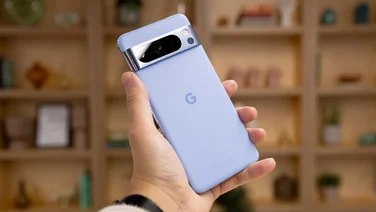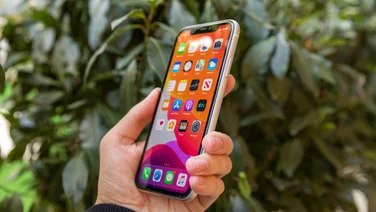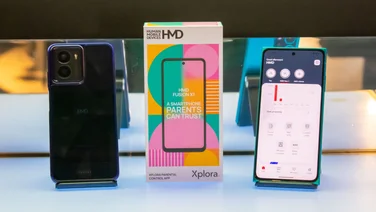To help us provide you with free impartial advice, we may earn a commission if you buy through links on our site. Learn more
- Xiaomi Mi 8 Pro review: What you need to know
- Xiaomi Mi 8 Pro review: Price and competition
- Best Xiaomi Mi 8 Pro contract deals and SIM-free:
- Xiaomi Mi 8 Pro review: Design and key features
- Xiaomi Mi 8 Pro review: Display
- Xiaomi Mi 8 Pro review: Performance
- Xiaomi Mi 8 Pro review: Cameras
- Xiaomi Mi 8 Pro review: Software
- Xiaomi Mi 8 Pro review: Verdict







- Great looks
- Flagship processor
- Same price as a OnePlus 6T
- No microSD expansion
- Lacks water resistance
- MIUI is ugly
The Xiaomi Mi 8 Pro might be a bit of a tongue twister – it’s pronounced “shaow-me-me-eight-pro” – but its launch in the UK represents a historical moment. The biggest event the domestic smartphone scene has witnessed, in fact, since OnePlus went invite-free back in 2016.That’s because, as the fourth-biggest smartphone maker in the world, Xiaomi has what it takes to violently shake up the smartphone status quo. This is a company with the muscle to produce high-spec phones at previously unheard-of prices – exactly the sort of approach that has made OnePlus so successful in recent years.
READ NEXT: The best smartphones money can buy
Xiaomi Mi 8 Pro review: What you need to know
The Xiaomi Mi 8 Pro encapsulates everything you need to know about Xiaomi as a company. It’s a smartphone with a flagship-class specification – a 6.2in, tall-thin OLED display, Snapdragon 845 processor and dual rear camera with 2x optical zoom – but at a price that’s lower than you might expect.
The question is: can the Mi 8 Pro match our current favourite, the OnePlus 6T, for overall performance and value?







Xiaomi Mi 8 Pro review: Price and competition
The Xiaomi Mi 8 Pro is precisely on par with the OnePlus 6T when it comes to price. For £499, you get a genuinely top-class handset – something that few manufacturers can rival for sheer value for money.
One obvious rival is the £330 Pocophone F1, but that also just so happens to be made by Xiaomi. Amongst other smartphone builders, the closest you’ll get to this type of performance for the money is Honor’s range of Kirin-powered phones. The Honor Play, for instance, which has the firm’s former flagship processor inside, the Kirin 970, costs a mere £280.
Best Xiaomi Mi 8 Pro contract deals and SIM-free:
Xiaomi Mi 8 Pro review: Design and key features
Why not just choose the Pocophone F1 then? Well, the Xiaomi Mi 8 Pro is a more attractive device. In fact, the Mi 8 Pro has to be one of the most unusual handset designs we’ve seen in 2018.
Not that it looks different from the front. Here, there’s a 6.2in display of the tall, narrow variety filling almost the entire front of the device, with a notch eating into the top edge. The volume rocker and red power button sit on the right edge, there’s a USB Type-C socket on the bottom edge between a pair of speaker grilles, and the dual-SIM tray is on the right. You also get an in-screen fingerprint reader and an infrared face-unlock front camera that works in the dark and in daylight.
It’s the rear of the phone that’s most interesting, though: instead of coloured or textured glass, a transparent panel exposes the phone’s innards, processors and circuit boards to all and sundry. I appreciate that it’s not for everyone, but it’s certainly a striking departure from the norm. Alas, if you don’t like it, you’re stuck: this is the only design of the Xiaomi Mi 8 Pro that’s going to be available officially in the UK.







Impressively, the phone is also equipped with Gorilla Glass 5 on the front and the back, meaning it has a nice slippery feel under the finger and is easy to wipe clean of fingerprints and other grime.
There’s no dust- or water-resistance rating, however, and the Mi 8 Pro doesn’t have a 3.5mm headphone jack. Most disappointingly, there’s no storage expansion – although, with 128GB of storage on board as standard, that’s less of an issue than it might otherwise have been.
Xiaomi Mi 8 Pro review: Display
Another area where the Mi 8 Pro impresses is the display, which measures a sizeable 6.2in across the diagonal. It’s not the sharpest display on the block, with its resolution of 1,080 x 2,280 (giving a pixel density of 402ppi), but the real news is that it uses AMOLED technology. In this strata of the smartphone world, you would expect to see inferior IPS displays, but not here.







Let’s be clear, the screen on the Xiaomi Mi 8 Pro is not as good as the AMOLED screens on Samsung’s or Apple’s high fliers, but you do get the same perfect deep black and exceptional contrast that all AMOLED screens deliver. Plus, as long as you turn off adaptive contrast and eye comfort, the screen is reasonably colour accurate. It’s capable of reproducing 97.7% of the sRGB colour gamut and colour accuracy (when measured against a sRGB target) is impressive.
Xiaomi Mi 8 Pro review: Performance


Raw performance is another area where the Xiaomi Mi 8 Pro shines. It has a Qualcomm Snapdragon 845 inside, accompanied by an Adreno 630 GPU, 8GB of RAM and a generous 128GB of storage. This lineup means the phone is exceptionally responsive and fluid in regular use. It benchmarks as well as any phone released this year, save the Apple iPhone Xs, Xs Max and XR.
Battery life is respectable but not class-leading. That means, crucially, it isn’t as good as the OnePlus 6T. However, among its other rivals, the Mi 8 Pro puts in a more than admirable performance. In our video rundown test, it lasted 15hrs 40mins, which translates to a comfortable day of moderate use.

Xiaomi Mi 8 Pro review: Cameras
Cameras are typically a weak point for cheaper phones, but the Mi 8 Pro starts out strongly. It has a dual camera setup on the rear, with both capturing photographs at 12 megapixels. The primary camera has a nice, bright aperture of f/1.8, big 1.4um pixels and optical image stabilisation. The secondary camera adds a 2x optical zoom with an aperture of f/2.4 but slightly smaller 1um pixels with less light gathering ability. On the front is a single 20-megapixel camera with an aperture of f/2.
That stacks up reasonably well against the OnePlus 6T, which remains the benchmark in the mid-price smartphone sector. In fact, in some respects, the Mi 8 Pro has the superior feature set. In particular, I would take the Mi 8 Pro’s optical zoom and larger pixels over the OnePlus 6T’s depth mapper, higher resolution and smaller 1.22um pixels.
The camera software is reasonably well-featured and usable, too. It has “AI” capabilities and a pro manual mode, but there are also a couple of extras you don’t normally see: a parallel and circular tilt-shift mode and an auto-straightener that shoots horizontally corrected images, no matter how wonky your shooting angle.

The key question is: do the results match the Mi 8 Pro’s impressive-looking specifications? The answer is, as ever, yes and no. The Mi 8 Pro is most impressive in low light where – shock horror – the camera performs better than the OnePlus 6. Its larger sensor and more sympathetic handling of noise means slightly cleaner, less muddy images in low-light conditions.^ Click the image to enlarge

In better light – I’m not going to call it good light because my test scene was captured on a very grey London day – the OnePlus edges in front, in particular for HDR images. Photographs captured using the Xiaomi’s HDR mode looked softer and over-saturated compared with the same scene shot at the same time on the OnePlus 6T. Even with HDR disabled, the 6T’s higher resolution still pays off. Photographs look more natural and much sharper.^ Click the image to enlargeThe other area in which the Xiaomi slightly misses the mark is video. Yes, it can shoot in 4K and, yes, it can do that stabilised, but it can’t shoot at 60fps as the OnePlus 6T can. And its video stabilisation isn’t the smoothest, either. It irons out minor shaking but the footage doesn’t look as eerily stable as on the OnePlus 6T.
Generally, though, footage looks natural and itis packed with crisp detail. Coupled with the superb stills quality, it contributes to a camera that is, overall, among the best at its price.







Xiaomi Mi 8 Pro review: Software
The one area where the Xiaomi Mi 8 falls significantly short is the software. As with Huawei and Honor, Xiaomi insists on employing its own Android launcher, dubbed MIUI and it runs on top of Android 8.1 Oreo.
I’m not a fan of the way it looks – or the way it works. Like Huawei’s EMUI, MIUI removes the app-drawer icon from the bottom of the screen in favour of dumping all your app icons on the desktop. Alas, there’s no way of reinstating the app drawer beyond downloading a third-party launcher such as Nova. I don’t like the way Xiaomi has redesigned the icons for all the core apps, either, and the blocked-off lockscreen notifications look absolutely horrid.
In the main, though, it seems generally clutter-free. Yes, there’s the usual list of duplicate apps for stuff the Google core software already covers. And, no, it isn’t as clean as Android is on the Pixel 3, the Pixel 3 XL or even the OnePlus 6T. It is also slick, quick and responsive and that goes some way towards making up for its annoyances.
Xiaomi Mi 8 Pro review: Verdict
The Mi 8 Pro demonstrates exactly why I’m so excited about Xiaomi’s entrance into the UK. It means we have yet another manufacturer focusing on delivering true value for money, instead of bolstering the profit margins with every incremental release.
In short, if you love a bargain and you’re bored of OnePlus phones, the Xiaomi Mi 8 Pro is the smartphone to buy. It’s a phone with hardcore flagship internals, but at the price of a mid-ranger – and it goes toe-to-toe with the OnePlus 6T on price.
For my money, the OnePlus 6T is still, marginally, the superior phone, but if you opt to choose the Xiaomi Mi 8 Pro, you’ll not be disappointed. Not one little bit.
| Xiaomi Mi 8 Pro specifications | |
|---|---|
| Processor | Octa-core Qualcomm Snapdragon 845 (4×2.7GHz, 4×1.8GHz) |
| RAM | 8GB |
| Screen size | 6.21in |
| Screen resolution | 1,080 x 2,248 |
| Pixel density | 402ppi |
| Screen type | AMOLED |
| Front camera | 20MP, f/2 |
| Rear camera | Dual: 12MP (primary), f/1.8, OIS; 12MP (2x telephoto), f/2.4 |
| Flash | Dual LED |
| Dust and water resistance | No |
| 3.5mm headphone jack | No |
| Wireless charging | No |
| USB connection type | Type-C |
| Storage options | 128GB |
| Memory card slot (supplied) | No |
| Wi-Fi | 802.11ac |
| Bluetooth | 5 |
| NFC | Yes |
| Cellular data | 4G, Cat16 (1Gbits/sec DL, 150Mbits/sec UL) |
| Dual SIM | Yes |
| Dimensions (WDH) | 75 x 7.6 x 155mm |
| Weight | 177g |
| Operating system | Android 8.1 Oreo |
| Battery size | 3,000mAh |




